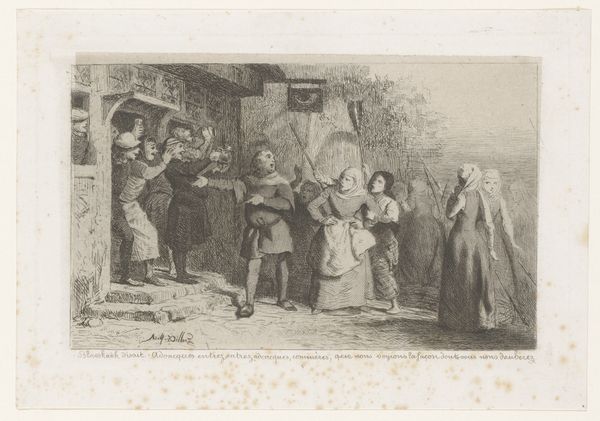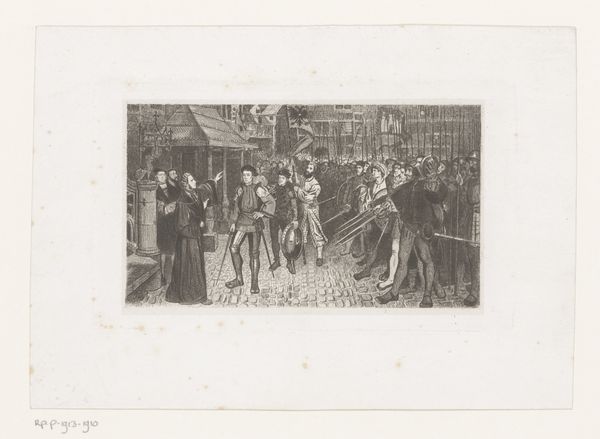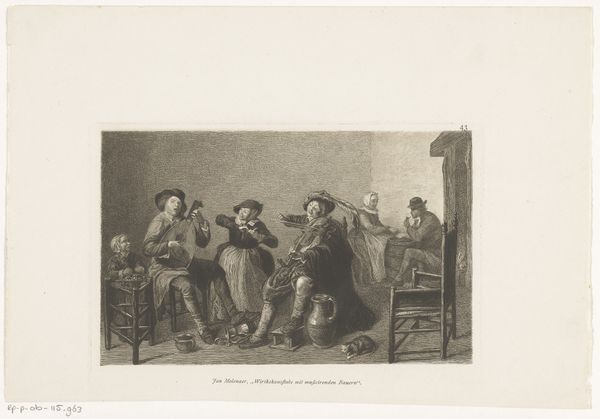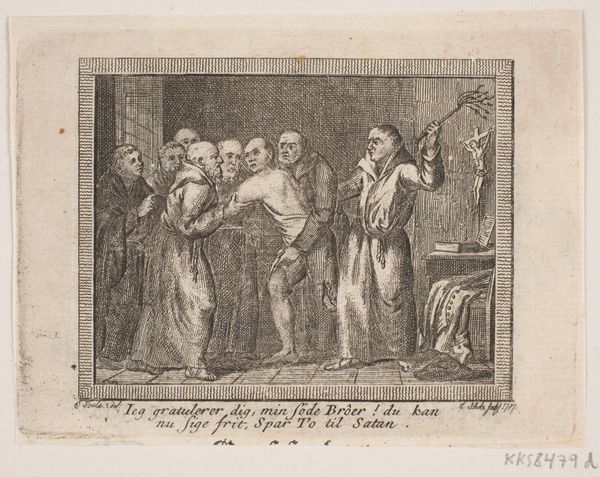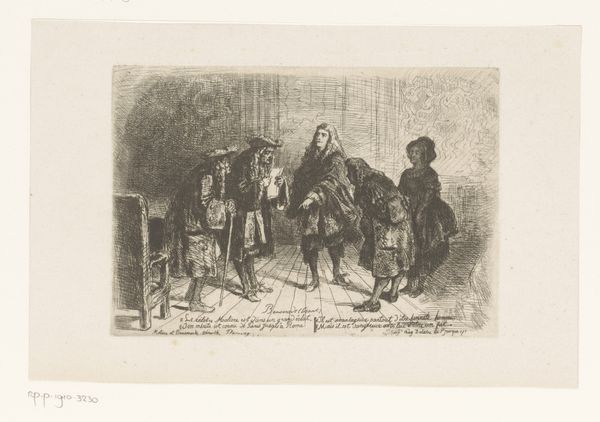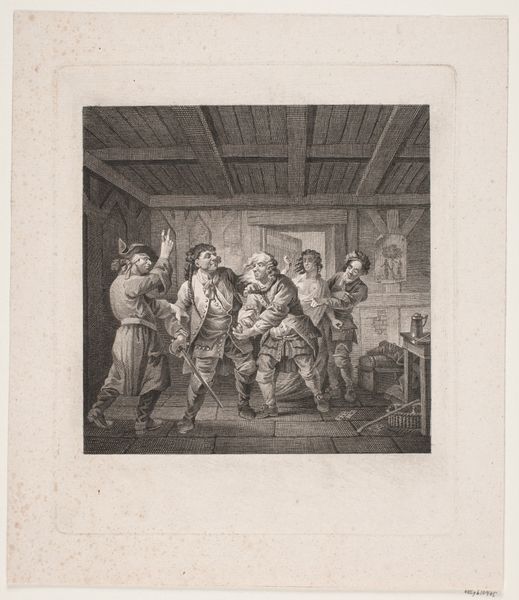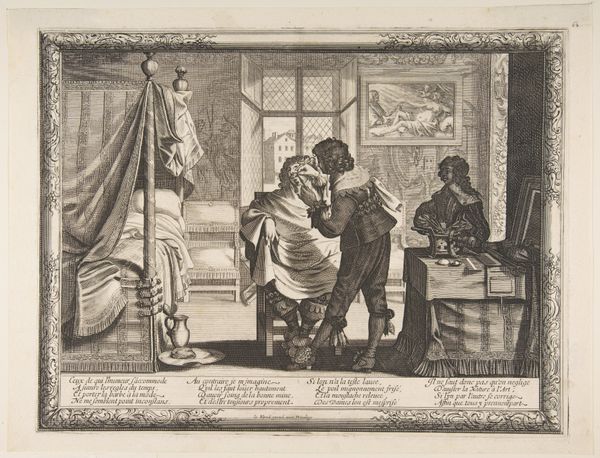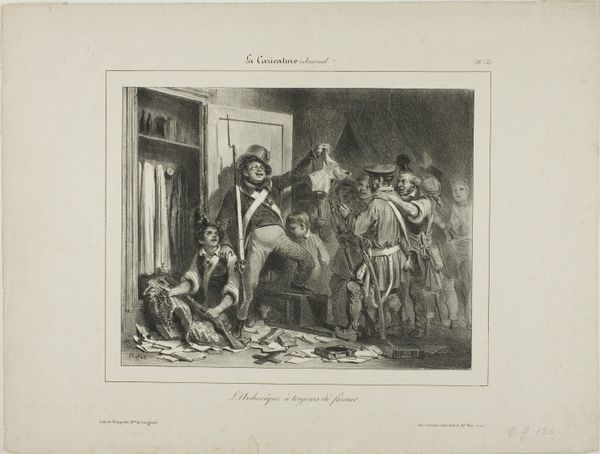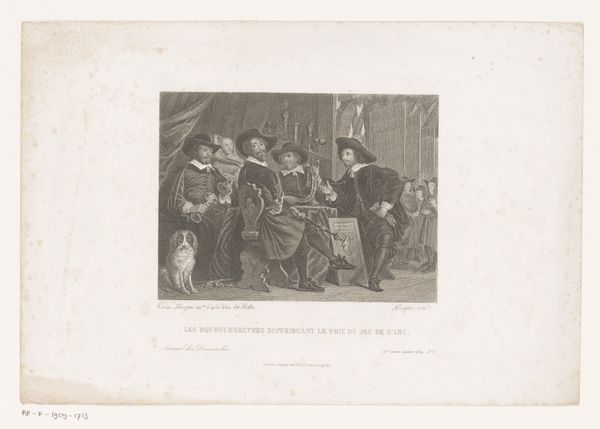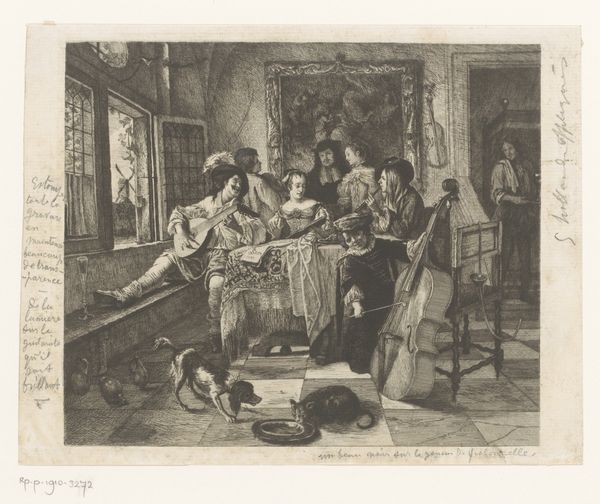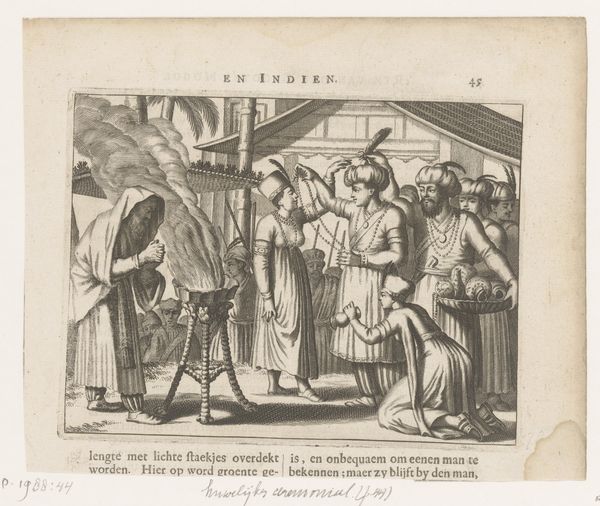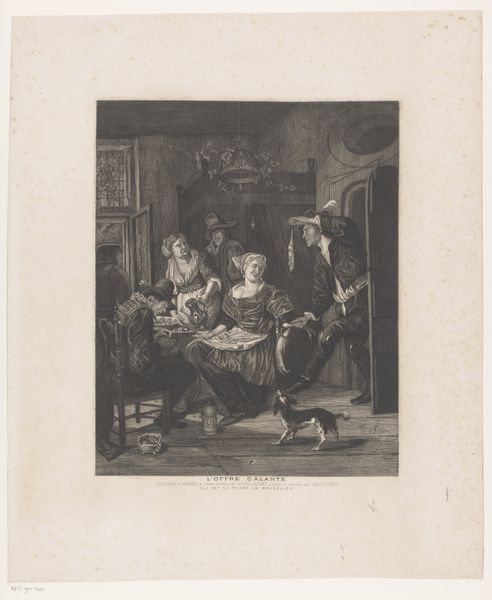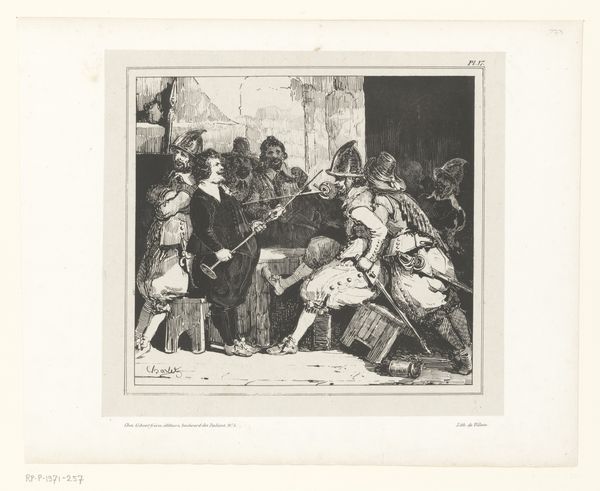
drawing, print, etching
#
drawing
#
narrative-art
#
baroque
# print
#
etching
#
men
#
genre-painting
Dimensions: Sheet: 11 3/4 × 14 3/4 in. (29.9 × 37.5 cm) Plate: 10 11/16 x 13 3/8 in. (27.1 x 34 cm)
Copyright: Public Domain
Editor: This is Abraham Bosse’s "The Bride Taken Home," an etching from 1633. It’s quite detailed for a print, and the expressions on everyone's faces are so interesting! How would you begin to interpret the forms and visual relationships at work here? Curator: We can observe how Bosse meticulously organizes the composition using line and texture. The detailed rendering creates a sense of depth and invites our eye to linger over the material world represented. Notice the clear, sharp lines in the foreground, especially defining the figures. This sharpness diminishes as we move toward the background, creating spatial recession. What effect does this linear approach have on your perception of the scene? Editor: It makes the foreground feel very present, almost theatrical. It's as if the space behind is receding, becoming less relevant to the central action. Curator: Precisely. We can analyze the framing both internally, within the image, and externally through the decorative border that surrounds the scene. What visual cues indicate where our attention is directed? Editor: I think the costumes and gestures are the focal point. They’re dynamic, contrasting with the more static elements of the setting. Curator: Consider the light source, seemingly emanating from the left. How does the artist manipulate the tonality, from dark to light? The effect is more than illumination; it defines volume and shape, bringing depth to a monochrome medium. Bosse expertly modulates shades from black to gray, building texture through intricate, layered strokes. The figures are rendered with pronounced tonal contrast and meticulous detailing, aren't they? Editor: Yes, and analyzing how light and shadow are deployed really brings forward the emotional tone as well. Thanks, I will now be looking for details! Curator: Understanding the language of form helps us appreciate Bosse’s craft as a commentary on the culture of his time, revealing how seemingly simple choices influence our viewing.
Comments
No comments
Be the first to comment and join the conversation on the ultimate creative platform.
